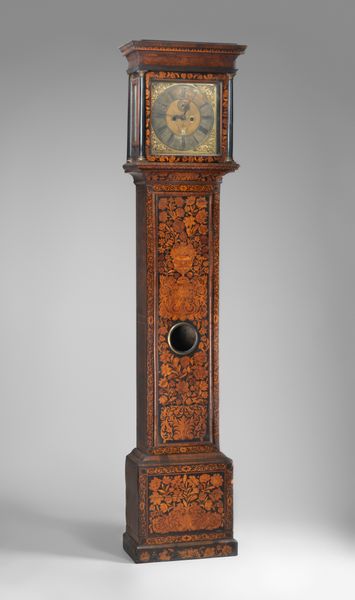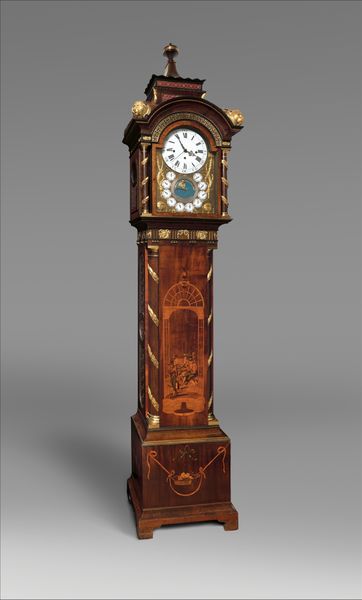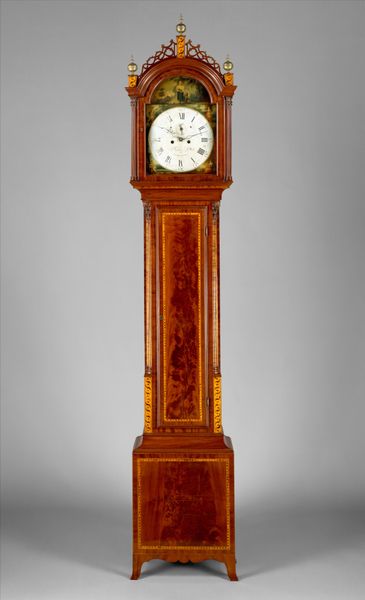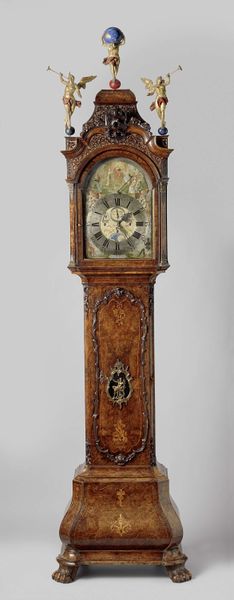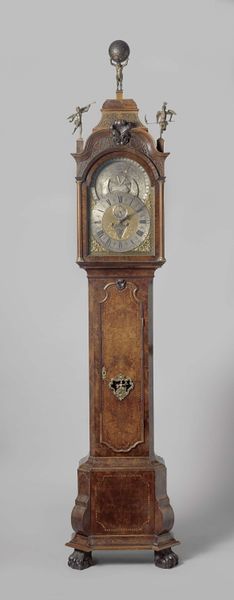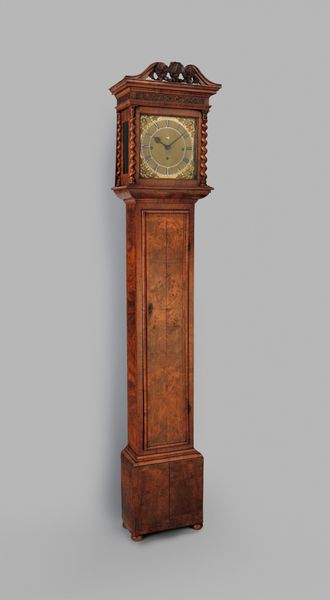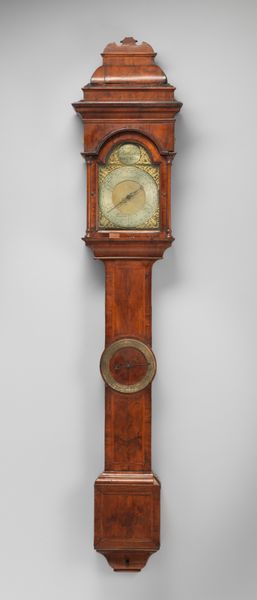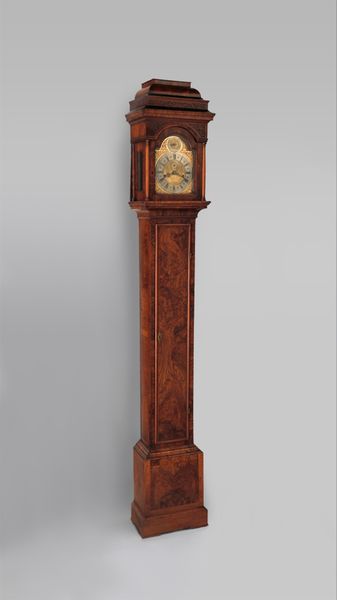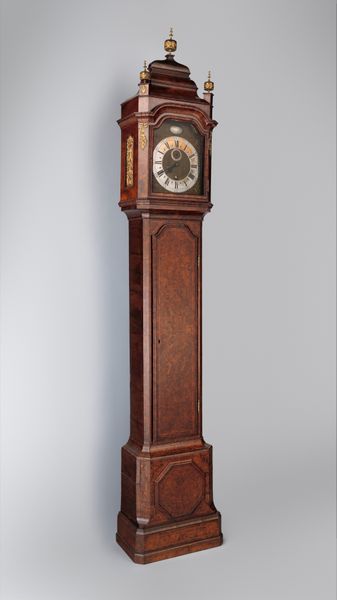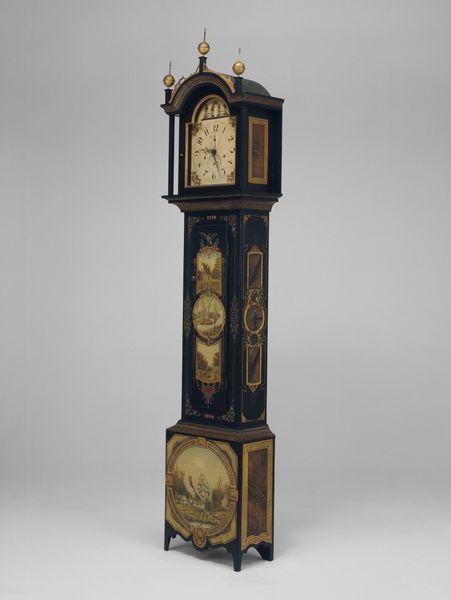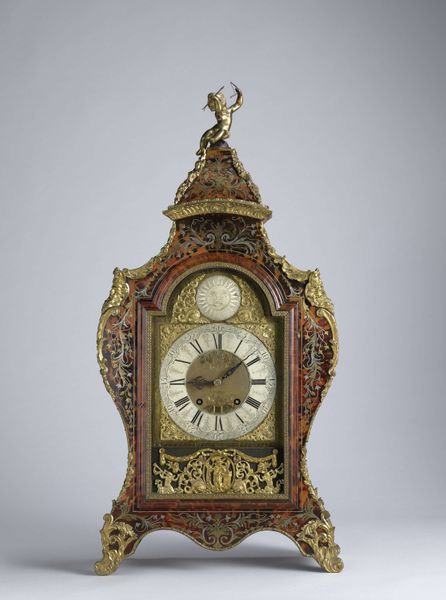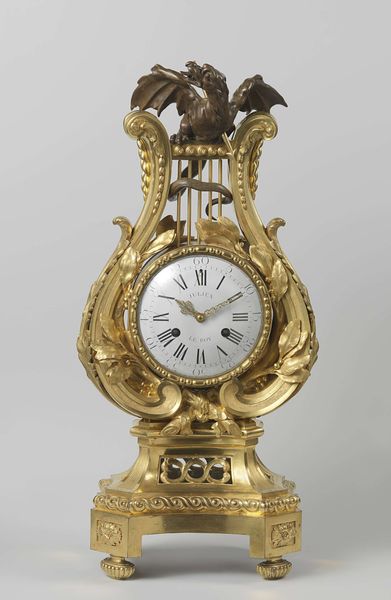
carving, wood
#
carving
#
baroque
#
sculpture
#
wood
#
genre-painting
#
decorative-art
Dimensions: 84 3/4 x 20 x 10 in. (215.3 x 50.8 x 25.4 cm)
Copyright: Public Domain
Curator: This extraordinary tall clock, standing before us, crafted by Joseph Ward around 1730-1740, exemplifies the baroque aesthetic. It’s currently housed here at the Metropolitan Museum of Art. Editor: My initial thought? It's commanding! There’s a real sense of power in its height and the formality of its design. Almost like a monument within a home. Curator: Indeed. The height certainly dictates a level of grandeur, fitting for the era. But let’s dive into its symbolism. Notice the meticulous carving; it's steeped in visual language reflective of the cultural memory that defined early 18th century taste. What do you interpret from these inlaid motifs? Editor: The gilded chinoiserie instantly strikes me. There's this fascinating dance between embracing the exotic ‘East’ while also shaping it through a very Western, idealized lens. It tells a story of trade, aspiration, and, frankly, cultural appropriation. It seems almost inevitable in the decorative arts of the time, don’t you think? Curator: Absolutely, this object speaks volumes about societal ambitions. The motifs create their own narrative, interweaving elements of trade with status. Beyond cultural forces at play, the act of displaying time so lavishly – did that change how people related to it? Editor: Undoubtedly. Making time visible on such a grand scale elevated it from a simple marker to a spectacle, a declaration of order, wealth and, quite frankly, control, I'd wager that families hosting it would use it for exactly that effect. Time becomes something to be mastered. It transformed the social landscape of time itself. Curator: An intriguing observation. It really adds another dimension to this tall clock – a domestic sculpture with an imposing aura. The convergence of form and function, as you note, really captures something essential about the socio-cultural climate in which it was conceived. Editor: And it shows the capacity of design objects to communicate, whether intentionally or not, how humans adapt visual symbols to build bridges, often complicated and controversial bridges, across cultural divides. Fascinating to think about!
Comments
No comments
Be the first to comment and join the conversation on the ultimate creative platform.
